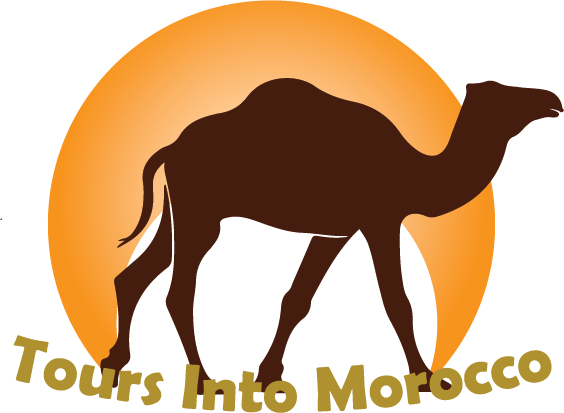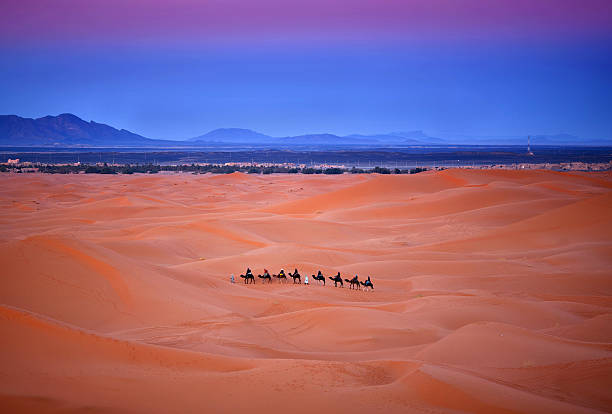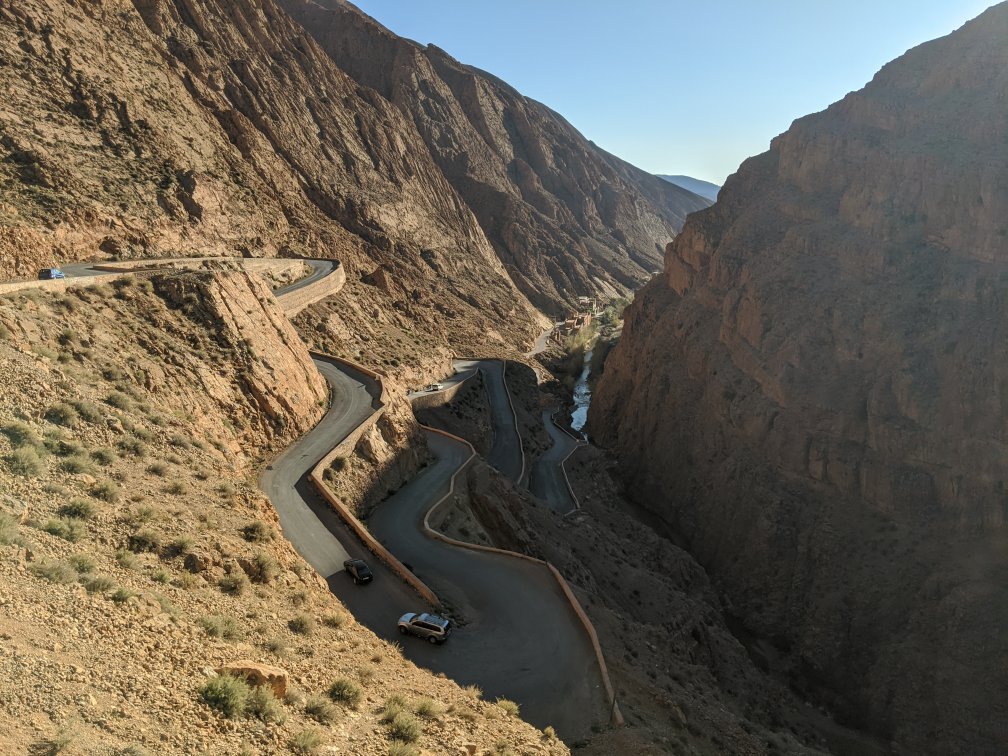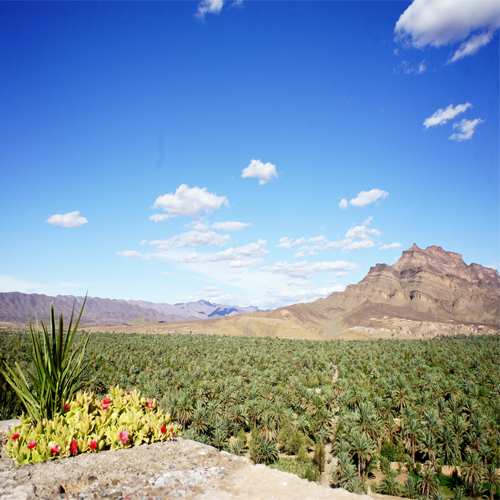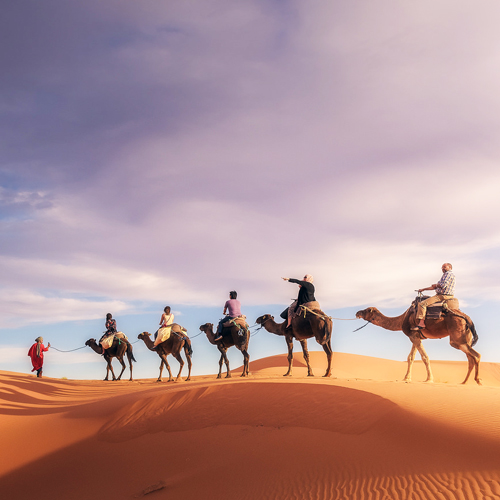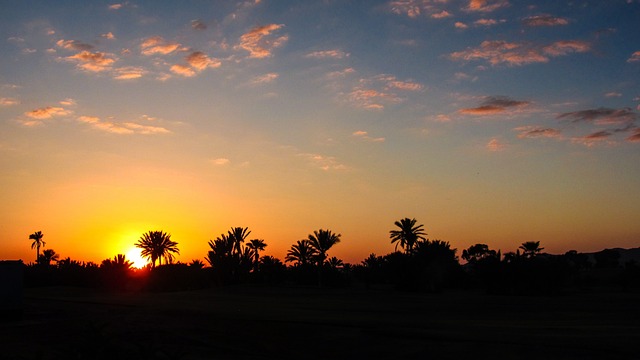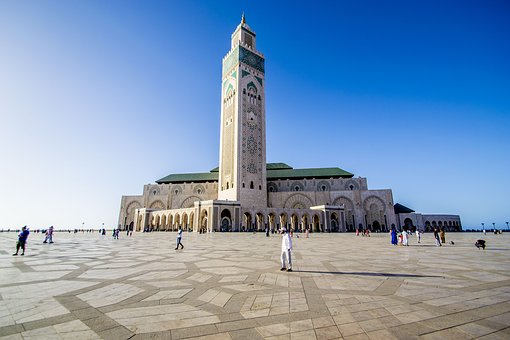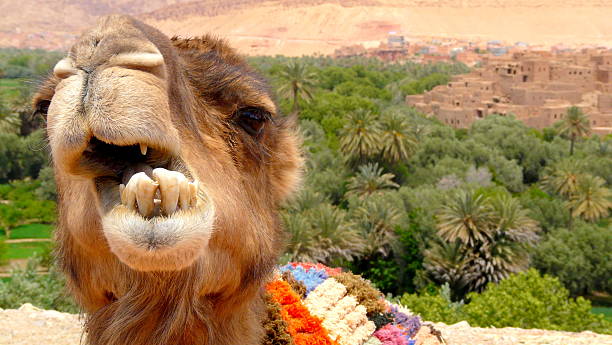Fes Morocco
Fes Morocco is a city located in the northern interior of Morocco and the capital of the Fez-Meknes administrative region. It is the second largest city in Morocco, with a population of 1.11 million people according to the 2014 census. It is located to the northwest of the Atlas Mountains, surrounded by hills, and the old city is centered around the Fez River ( Oued Fez) flowing from west to east. The city of Fez has been called the “Mecca of the West” and the “Athens of Africa.” It is also considered the spiritual and cultural capital of Morocco.
The city of Fez was founded under the Idrisids during the eighth and ninth centuries AD, and initially consisted of two independent and competing settlements. Successive waves of Arab immigrants mainly from Africa (Tunisia) and Andalusia (Spain and Portugal) in the early 9th century gave the nascent city its Arab character. After the fall of the Idrisid dynasty, other empires came and went until the 11th century, when the Almoravid Sultan Yusuf ibn Tashfin united the two settlements into what is known today as the district of Fez el-Bali (also known as the Medina of Fez). Under Almoravid rule, the city gained a reputation for religious scholarship and commercial activity.
Palaces and homes with historical significance
In varying degrees of conservation, some historic private homes have also survived to this day. An indoor courtyard is at the center of a typical traditional dwelling, or dar. A riad, or interior gardens, was another feature of some of these homes.495–496, These private residences include Dar Belghazi, Dar ‘Adiyil, Dar Saada (now a restaurant), and Dar al-Alami. The Dar Mnebhi, Dar Moqri, and Jamai Palace are examples of larger, wealthier houses that have been restored.101–156 Many of the traditional homes, sometimes referred to as “riads,” are currently in use as motels for travelers. In the early 20th century, the Jamai Palace was transformed into the opulent Palais Jamaï. Dar Glaoui, the opulent former home of the Glaoui family, is partly open to visitors but still privately owned.

Tanneries
Tanning has been a major tourist attraction in Fez since the city’s founding and has been going strong ever since. There are three tanneries in the city; the largest is Chouara Tannery, which is located along the river close to the Saffarin Madrasa. The circular stone wells used in tanneries are crammed with white liquids or dyes to soften skins. Worldwide exports are made of the leather products made in tanneries. Ain Azliten Tannery, located in the same-named neighborhood on the northern outskirts of Fes el-Bali, and Sidi Moussa Tannery, situated west of Moulay Idris II’s Zawiya, are the two other significant tanneries.
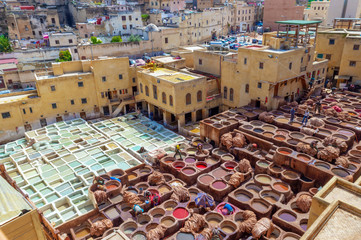
Fes city
Fes el-Bali, the old city on both banks of the Oued Fes (River of Fez), and the smaller Fez Jdid, established in the 13th century on higher ground to the west, make up the historic city of Fez. It is different from the Ville Nouvelle (new city) of Fez, which is today much larger. One of the biggest and oldest urban pedestrian zones (car-free regions) in the world is Fes el-Bali, the oldest walled city in the Arab world that has been inhabited continuously. Fez el-Jdid is home to the 195-acre Royal Palace, which is still occupied by the Moroccan King, while Qarawiyyin University and the Zawiya of Moulay Idris II are the most significant religious and cultural attractions. These two important historical cities are linked together and are usually referred to together as the “medina” of Fez, though this term is sometimes applied more restrictively to Fes el-Bali only.
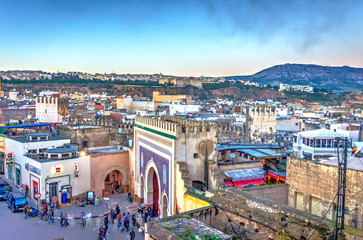
The number of non-Moroccans renovating traditional houses (riads and dars) in the medina as second residences is growing as Fez becomes a more popular tourist destination. The Medina of Fez was named an area Heritage site by the United Nations Educational, Scientific, and Cultural Organization (UNESCO) in 1981. The monument is considered to be “one of the most extensive and best conserved historic towns of the Arab-American world.” Granted this designation, it was the first location in Morocco.
Places of religious worship
The medina is home to many old mosques, some of which are a part of zawiyas or madrasas. The oldest that are still standing are the al-Qarawiyyin Mosque, which was established in 857 and later expanded, the Andalusians Mosque, which was established in 859–860, the Bou Jeloud Mosque, which dates from the late 12th century, and possibly the Mosque of the Kasbah en-Nouar, which was possibly built during the Almohad era but was most likely rebuilt much later. The Mosque of the Sharifs, also known as Shurafa Mosque, and the Mosque of the Sheikhs, also known as al-Anouar Mosque, are the city’s oldest mosques and date back to its founding days; however, they are no longer standing in their original configurations. The Mosque of the Sharifs was the burial site of Idris II and evolved into the Zawiya of Moulay Idris II that exists today, while the al-Anouar Mosque has left only minor remnants.
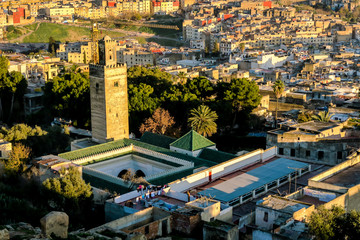
The Great Mosque of Fez el-Jdid (1276), the Abu al-Hasan Mosque (1341), the Chrabliyine Mosque (1342), and the al-Hamra Mosque (c. 1342) are among the several mosques that date from the significant Marinid era, when Fes Jdid was established as the capital of Morocco. Although it was altered in following decades, the Bab Guissa Mosque was also established under the rule of Abu al-Hasan (1331–1351). Other significant mosques from the more recent ‘Alawi period include the R’cif Mosque, constructed during Moulay Slimane’s reign (1793–1822), and the Moulay Abdallah Mosque, constructed in the early to mid-18th century containing the tomb of Sultan Moulay Abdallah (391). Mosque areas are included in the Zawiya of Moulay Idris II and the Zawiya of Sidi Ahmed al-Tijani as well, as do several other prominent zawiyas in the city.[4]: 118–131 [131][12]: 132–133 The Ville Nouvelle also includes many modern mosques, the largest of which is the Imam Malik Mosque which opened in 1994.
Madrasas
The Great Mosque of Fez el-Jdid (1276), the Abu al-Hasan Mosque (1341), the Chrabliyine Mosque (1342), and the al-Hamra Mosque (c. 1342) are among the several mosques that date from the significant Marinid era, when Fes Jdid was established as the capital of Morocco. Although it was altered in following decades, the Bab Guissa Mosque was also established under the rule of Abu al-Hasan (1331–1351). Other significant mosques from the more recent ‘Alawi period include the R’cif Mosque, constructed during Moulay Slimane’s reign (1793–1822), and the Moulay Abdallah Mosque, constructed in the early to mid-18th century containing the tomb of Sultan Moulay Abdallah (391). Mosque areas are included in the Zawiya of Moulay Idris II and the Zawiya of Sidi Ahmed al-Tijani as well, as do several other prominent zawiyas in the city.[4]: 118–131 [131][12]: 132–133 The Ville Nouvelle also includes many modern mosques, the largest of which is the Imam Malik Mosque which opened in 1994.
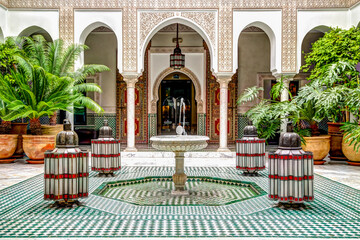
Fatima al-Fihri founded the al-Qarawiyyin in 857; it was formerly a mosque and is currently a university. Forty According to UNESCO and Guinness World Records, it is the longest continuously running educational institution in the world that grants degrees. Due to the Marinid dynasty’s focus on building madrasas in the Maliki style, the city’s religious institutions have never prospered more than they have. Sultan Abu Yusuf constructed the Saffarin Madrasa in Fes el-Bali in 1271, which was the first madrasa constructed during the Marinid reign.312 Sultan Abu al-Hasan completed the construction of the Al-Attarine, Mesbahiyya, and Sahrij madrasas, making him the most prolific patron of madrasa building. The Bou Inania Madrasa was constructed by his son Abu Inan Faris, and at the time of his passing, every significant city in the Marinid Empire had at least one madrasa.[142] The library of al-Qarawiyyin, which holds a large collection of manuscripts from the medieval era, was also established under Marinid rule around 1350.[4]: 148 It is widely believed to be the oldest library in the world that is still open
Fes Hammams
Many of the old hammams (public baths in the Muslim world) in Fez have been preserved, and the locals still use them. The Hammam as-Saffarin, the Hammam al-Mokhfiya, and the Hammam Ben Abbad are a few examples, all of which are from the 14th century. They were typically constructed close to a natural spring or well that supplied water, and the city’s sloping terrain made drainage simple. There is a changing room, a cold room, a warm room, and a hot room in the typical hammam configuration that was carried over from the Roman bathhouse style. Some of them, such as the Hammam as-Saffarin and the Hammam al-Mokhfiya, have more ornamentation even if their architecture can be quite utilitarian. The hammams can be distinguished by the exterior by the domes and vaults above their main chambers.
City Nouvelle
Avenue Hassan II, formerly known as Avenue de France and designed by the French colonial government after 1912, is the hub of the Ville Nouvelle.139 Between the lanes for automobile traffic is a park area with trees lining the edge. Place de la Résistance (formerly Place Gambetta), a sizable roundabout with a fountain in the middle, is located at the northeastern terminus of the boulevard.82 Place Florence (formerly Place Lyautey), a broad plaza with trees planted on it and originally intended to be a public garden, is located further south along the same roadway.82 Place Ahmed El Mansour (formerly Place Galliéni) is located at the southwest end of the avenue.
The city’s principal public buildings were constructed along and beside its principal boulevard during the colonial era.139 This era saw the construction of buildings that combined Art Deco, Neoclassical, and mauresque (also known as Neo-Moorish or Moroccan) architectural styles.172–192 Architect René Canu constructed the Bank al-Maghrib building between 1928 and 1931 on the south side of Place Florence.181 The Central Post Office building is located close by, on the east side of Avenue Hassan II. Architect Edmond Pauty constructed the original post office here in 1925 and 1927. However, in 1946–1947, architect Emile Toulon renovated and expanded it into its current configuration.
Also, you may like Fes desert tours
Desert tour 2 days Fes to Merzouga Erg Chebbi
=> Tour price: $110-450
=> Duration: 2-4 days
=> Group size: 2-50 tourists
=> Languages: Italian, English, French, Spanish, German
Fes to Marrakech 3 days tour into desert
=> Tour price: $120-500
=> Duration: 2-4 days
=> Group size: 2-50 tourists
=> Languages: Italian, English, French, Spanish, German
4 days Fes to Marrakech Tour into Morocco
=> Tour price: $130-500
=> Duration: 2-4 days
=> Group size: 2-50 tourists
=> Languages: Italian, English, French, Spanish, German
Fes desert tour 5 days to Marrakech via Merzouga
=> Tour price: $130-500
=> Duration: 2-4 days
=> Group size: 2-50 tourists
=> Languages: Italian, English, French, Spanish, German
Trending tours from Marrakech to Morocco
2 days tour from fes to merzouga
2 days tour Marrakech to Merzouga desert
=> Tour price: $120-450
=> Duration: 2-4 days
=> Group size: 2-50 tourists
=> Languages: Italian, English, French, Spanish, German
2 days tour from fes to merzouga
3 days desert tour from Marrakech to Fes
=> Tour price: $100-500
=> Duration: 2-4 days
=> Group size: 2-50 tourists
=> Languages: Italian, English, French, Spanish, German
2 days tour from fes to merzouga
4 days trip to Fes from Marrakech via desert tour
=> Tour price: $120-500
=> Duration: 2-4 days
=> Group size: 2-50 tourists
=> Languages: Italian, English, French, Spanish, German
2 days tour from fes to merzouga
6 days desert tour Marrakech to Casablanca and Merzouga
=> Tour price: $120-500
=> Duration: 2-4 days
=> Group size: 2-50 tourists
=> Languages: Italian, English, French, Spanish, German
Popular Tours From Casablanca Into Morocco
Casablanca to Marrakech tour 5 days into Morocco tour
=> Tour price: $410-1650
=> Duration: 4-20 days
=> Group size: 2-50 tourists
=> Languages: Italian, English, French, Spanish, German
8 days trip from Casablanca Morocco
=> Tour price: $410-1700
=> Duration: 6-20 days
=> Group size: 2-50 tourists
=> Languages: Italian, English, French, Spanish, German
10 Days Tour From Casablanca & Sahara Desert
=> Tour price: $690-2500
=> Duration: 8-20 days
=> Group size: 2-50 tourists
=> Languages: Italian, English, French, Spanish, German
15 days grand tour from Casablanca
=> Tour price: $790-2500
=> Duration: 10-20 days
=> Group size: 2-50 tourists
=> Languages: Italian, English, French, Spanish, German
Popular Tours From Tangier Into Morocco
5 Days tour from Tangier to Marrakech and desert
=> Tour price: $395-500
=> Duration: 6-15 days
=> Group size: 2-50 tourists
=> Languages: Italian, English, French, Spanish, German
6 days trip from Tangier to Marrakech
=> Tour price: $400-800
=> Duration: 6-15 days
=> Group size: 2-50 tourists
=> Languages: Italian, English, French, Spanish, German
From Tangier to Marrakech 8 days desert tour
=> Tour price: $500-1000
=> Duration: 8-15 days
=> Group size: 2-50 tourists
=> Languages: Italian, English, French, Spanish, German
10 days desert tour from Tangier to Marrakech
=> Tour price: $500-1400
=> Duration: 10-20 days
=> Group size: 2-50 tourists
=> Languages: Italian, English, French, Spanish, German
Tours Into Morocco
Tours Into Morocco is a progressive travel agency that offers its clients a variety of tours and destinations to enjoy. With our travel services, you can go anywhere you want, from the landscapes of the High Atlas Mountains to the deepest Moroccan Sahara desert, to the imperial cities to discover everyday life and the real Morocco.
